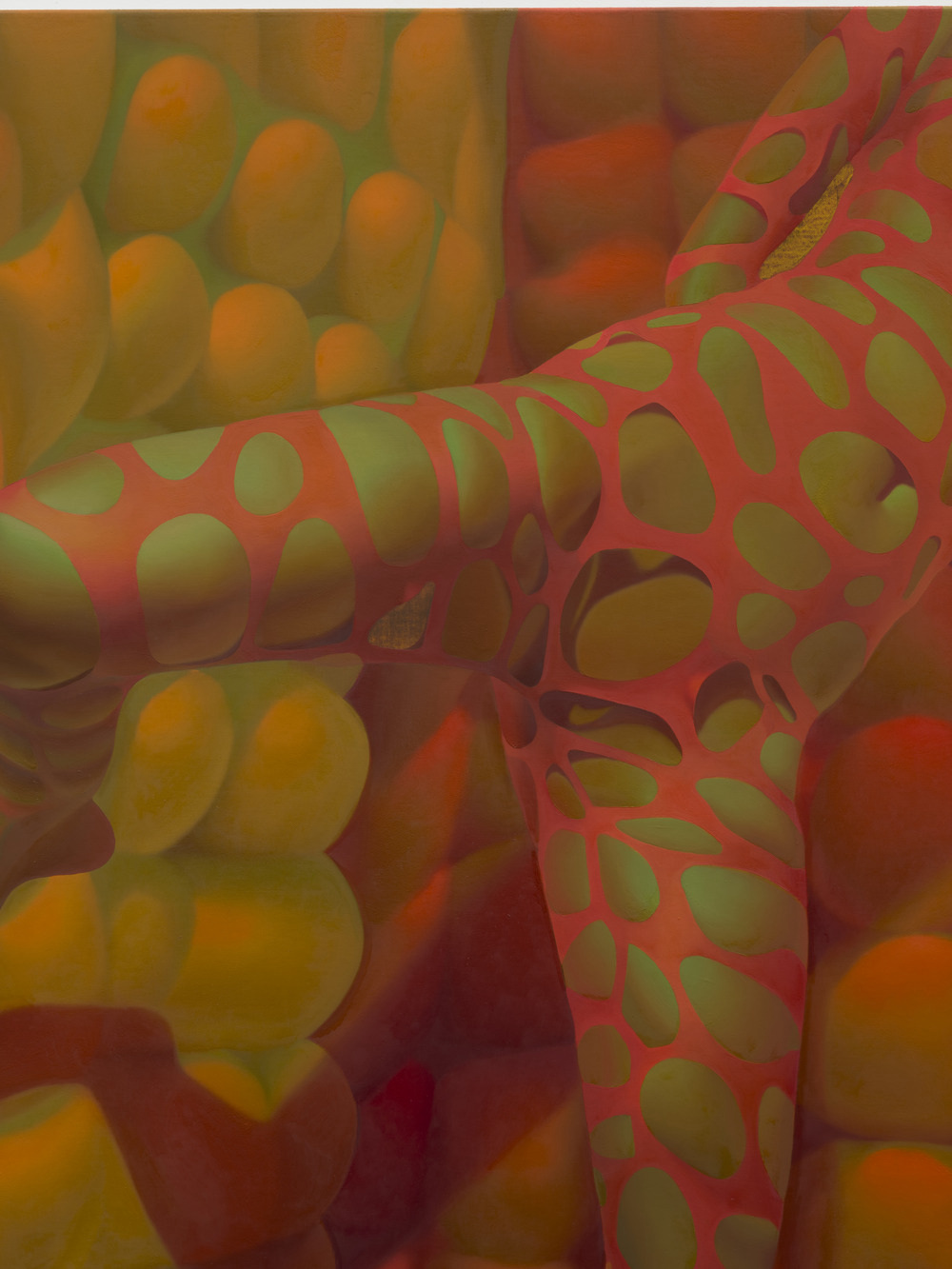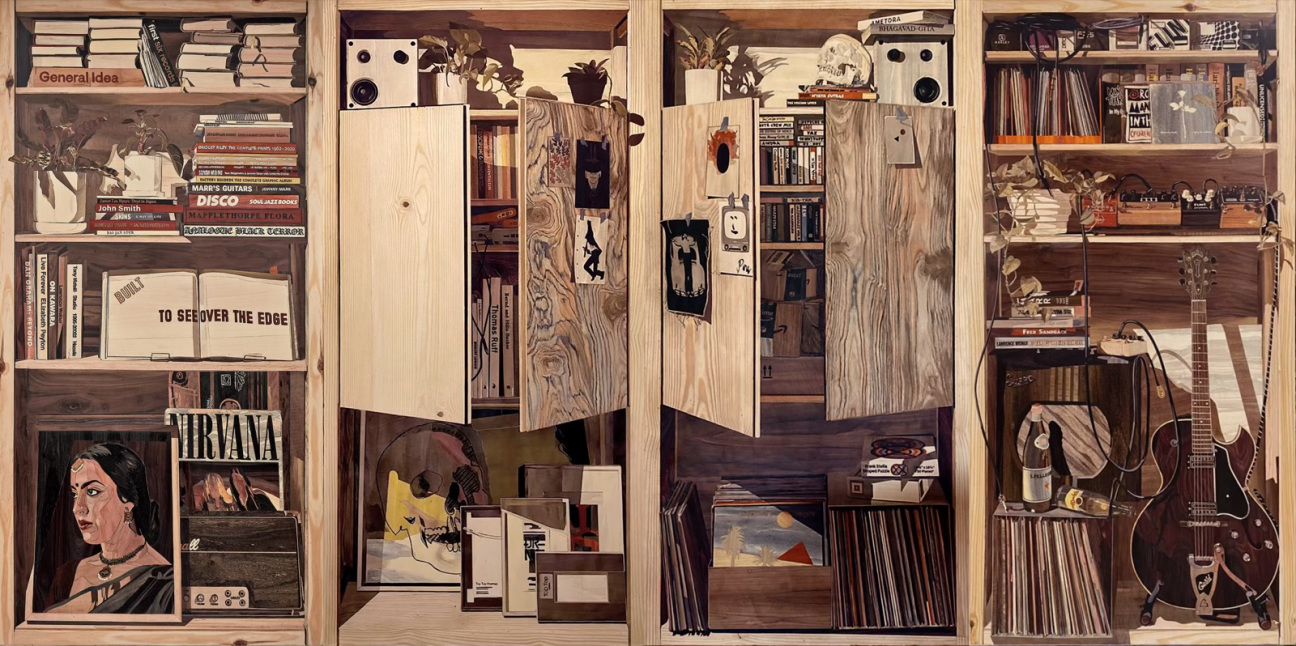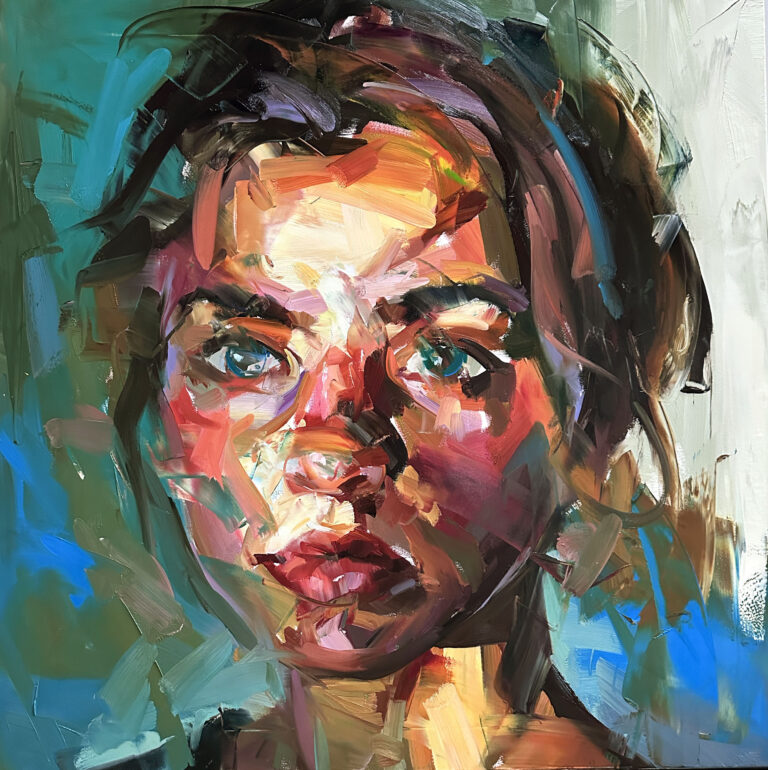For our In Brief column, our critics sort through and select from New York’s art offerings to present a group of short reviews that share a thread, theme, medium, or neighborhood. In this debut installment, CULTURED Co-Chief Art Critic John Vincler looks to the small galleries clustered around Henry Street, where Chinatown meets the Lower East Side, and finds some of the most adventurous art on view now.
Brian Oakes, “SEED”
Blade Study on the Lower East Side, 17 Pike Street
bladestudy.net
Through October 13, 2024
The exhilarating sculptures by Brian Oakes in “SEED” immediately bring to mind the play and interests of children. Their material lists read like science fiction: army men cast in piezoelectric crystals, homemade rubies, fordite (or hardened layers of automotive paint), meteorite fragments, and four wisdom teeth (the artist’s).
The trick the Brooklyn-based artist pulls off is to situate these objects of wonder within ornately complex systems, housed in industrial display cases. The larger works in “SEED” recall the maximalist miniature cities of Chris Burden’s Metropolis sculptures, with their networks of toy car and train tracks alongside architectures of Lincoln Logs and Legos.
Take for example, Oakes’s ASRS 1, 2024, a functioning, very scaled-down automated storage and retrieval system, like those used in commercial ports for the sorting and loading of goods for shipping. But, here, the goods are detailed miniature artworks on tiny wooden pallets. The sculpture becomes its own self-contained exhibition, forever rearranging its components in a vertical grid.
The glow from the central portion of Encryption Device 1, 2024, emanates from a row of lava lamps within. At first glance, the whole slick contraption looks like an analog synthesizer, with rows of patch cords and flashing lights, but it makes no noise beyond the faint whir of a motor. The output from a camera trained on the lava lamps is used as an input for a random number generator. Atop the setup, the artist has built a diorama-like scene representing the allegory of Plato’s Cave.
The cumulative result of such intricate sculptures is one of the most innovative gallery shows I’ve seen in months. Behind the gadgetry are serious philosophical questions about consumerism and how technology mediates our experience of reality.

Kate Meissner & Regina Parra, “Tableaux Rosa”
Lyles & King on the Lower East Side, 19 Henry Street
lylesandking.com
Through October 5, 2024
In this two-person painting show, alternating canvases with harmonizing palettes of jewel tones and shadowy neon make a lush impression. Regina Parra’s realistically rendered, aerial-view still lifes of fruit (figs, pomegranates) soaked in milk are punctuated by figurative moments, such as when a hand enters the composition. More interesting are Los Angeles-based painter Kate Meissner’s explorations of the femme form—torsos and limbs especially. Think Hans Belmer without the hints of sadism. Or, better yet, if you didn’t catch the Christina Ramberg restrospective in Chicago and won’t make it to Los Angeles, consider this a worthy alternative to her dark geometries and cinched volumes, from a living painter still at the start of her career.
The smooth, mannequin-like forms of Meissner’s bodies, and the luridly lit imaginary or virtual places they occupy, are deliciously, pungently hued. She favors sour yellow-greens, synthetic grape purples, and acidic oranges. Shadows and repeating patterns bend the space of her pictures, producing fascinating contortions.
In Greenroom, 2024, two figures stand in a David Lynchian department store dressing room. A parabola of drapery descends swallowing the head of the central figure whose fleshly back is exposed at the middle of the picture. Her shadow cast at right creates a third standing presence. At left, the plastic gleam reflecting off a toeless foot suggests a green plastic Barbie doll. If galleries have to default to selling beautiful paintings to stay afloat, please, please make them this interesting.

Michael Bühler-Rose, “I Want Your Skull”
New Discretions at Situations on the Lower East Side, 127 Henry Street
newdiscretions.com
Through October 20, 2024
All of Michael Bühler-Rose’s artworks in “I Want Your Skull” are made using intarsia, a wood inlay technique that incorporates the material’s variations in color and pattern to create an image. The star here is the multi-panel work Bühler-Rose Studiolo Summer ‘24 (FDR & Grand St.), 2024, which reproduces the artist’s bookshelves across several panels. The collected objects held within create a sort of portrait of the artist, who lives and works in New York and Mysore, India.
There are nods to coming of age in the Hare Krishna movement and in the punk music scene. The depicted selection of art books charts a pantheon of affinities with other artists: General Idea, Dan Graham, Bridget Riley, and On Kawara. A book by Lawrence Weiner is shown held open to reveal a full-page spread of the phrase “BUILT TO SEE OVER THE EDGE.” Potted house plants sit on the shelf above, while a Marshall-brand guitar amp head and some Nirvana (the band) ephemera faces out on the shelf below—all of it rendered in wood.
The whole show is a rumination on collecting, including two excellent works that reproduce the backs of a painting and a framed drawing (by Salvador Dalí and Robert Rauschenberg, respectively), emphasizing their provenance and object history. The inlay technique Bühler-Rose uses may date to the Italian Renaissance, but these pictures feel fresh—meticulous craftsmanship jolted by conceptual verve.

Kevin Reinhardt, “6”
56 Henry on the Lower East Side, 56 Henry Street
56henry.nyc
Through October 27, 2024
The Los Angeles-based artist Kevin Reinhardt presents an eclectic and subtle combination of works, which includes a set of drawings, a series of photos, and a sculpture within the fittingly diminutive gallery space. Across these works—well, at least across the photos and drawings—Reinhardt performs a sort of alchemy of the mundane.
The drawings reproduce receipts from CVS, Target, H Mart, and elsewhere. From a distance they look like exact facsimiles, but on closer inspection, they walk a fascinating line between loose hand drawing and faithful representation. Each receipt totals a sequence of the same digit, like $22.22 and $6.66. It’s a detail that’s equally meaningless and noteworthy—if a cashier handed such a slip of paper to you, maybe you would smile before you crumpled it up. The receipt drawings also feel, here, like an inside joke, as the gallery has previously shown at least two outrageously oversized soft-sculpture CVS receipts by Al Freeman, who takes a radically different approach to making the same banal subject interesting.
The photographs, Precursor to Still Life, 1993 I-IV, 2024, all show a house fly trapped in an overturned water glass. Reinhardt manages to produce a bit of cinema from almost nothing: in the progression of images, he shows the insect on the ground under the glass, then as a blur attempting to fly within, then resting on the side near the top of the glass, only to once again end up on the floor, now on its back, presumably dead.
Mostly, we see the white expanse of the photo paper. The translucent glass, with its slight shadow—ghostly and unmoving. The black fly isn’t much more. But the photos still reward and demand attention for the choices made with these few elements, such as the just-barely-perceptible touches of blue-green dye that the artist has hand painted on the fly’s body in the third and fourth pictures. It’s just a dusting of visual drama—understated magic.










 in your life?
in your life?

